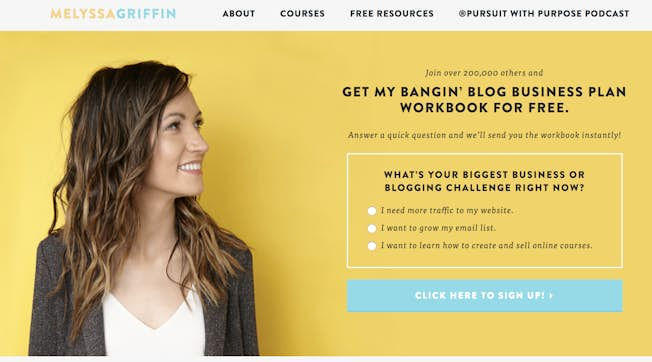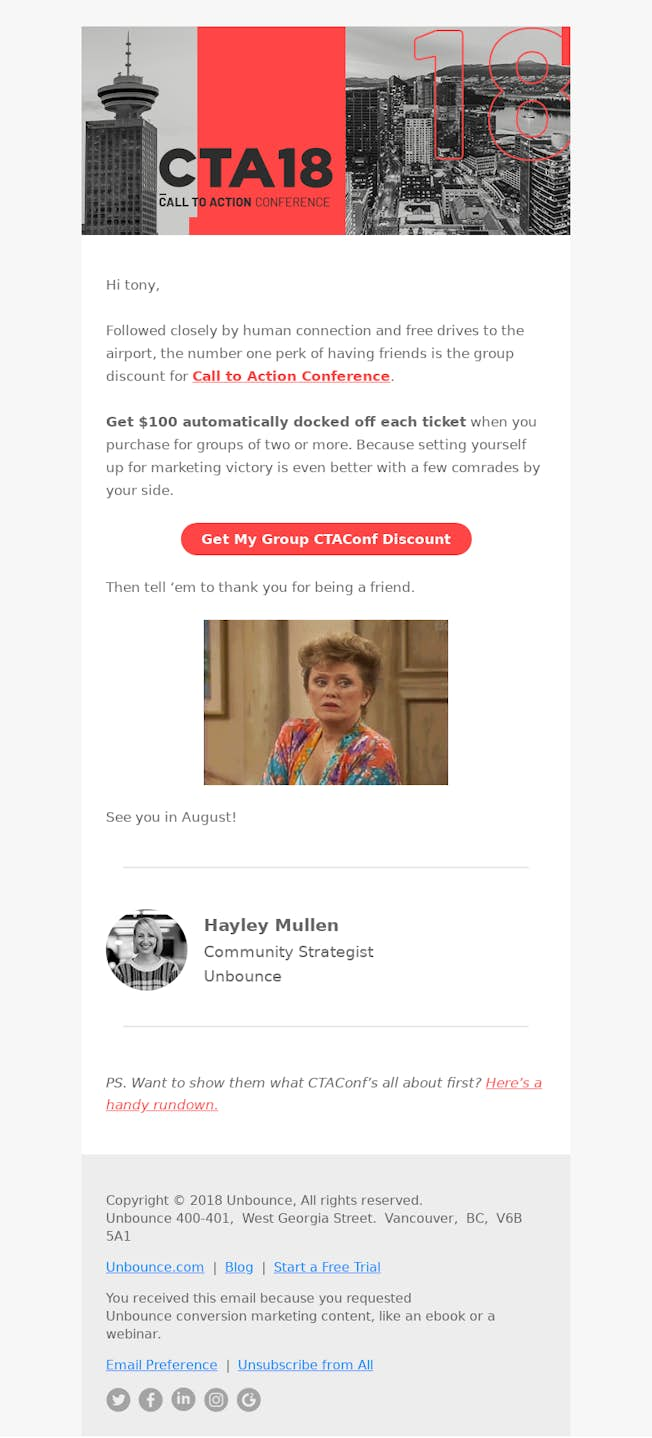Aug 20, 2018
How to Use Email Marketing Effectively to Promote Events
When it comes to promoting a time-sensitive offer in your business, there are many avenues you might want to test out, such as Facebook ads, influencer outreach and search ads.
Another one, often underrated, is email marketing. As well as community building, email marketing has benefits for any type of promotion, including:
- It is low-cost, and typically provides higher reach and engagement for its cost compared to paid advertising
- It is aimed at an already warm and engaged audience
- Getting started is extremely simple
- Even with basic measurement and tracking, it is easy to show the return on investment
Furthermore, unlike social channels, email marketing doesn’t depend on algorithms or the nature of any particular platform. It’s reaching people who have consented to hearing from you through a personal and protected communication channel - their email.
In this guide, we’ll specifically look into promoting one-off or annual events, such as industry conferences, one-day sales, charity events, and highly purchase-oriented periods such as Black Friday and Cyber Monday.
Why Email Marketing Works for Events
Unlike your social media following, your email list naturally consists of people who are close to your brand. They may have simply subscribed to receive offers and discounts, or they might be someone who’s purchased from you in the past.
Either way, no matter how big or small your list is, it’s easy to see the value behind it. As mentioned above, it’s the most one-on-one way to communicate with your audience, with outcomes such as:
- Return of $44 for every $1 spent
- Open rates from 20.4% to 24.1% for events and non-profit categories
- Almost 5% click-through rate for event email marketing
These numbers mean that even a small email list can drive significant results without risking your budget.
What makes these outcomes happen for email more than any other promotion channel? Here are some email-specific features to consider.
Powerful segmentation. From the first moment you attract a new subscriber, you can start segmenting them. One way is to ask for relevant information directly in the sign-up form, like Melyssa Griffin does on her homepage. This allows her to target relevant subscribers with new digital product launches and in-person events.

Another way to segment is by tracking activities of specific users, such as certain clicks and purchases, in order to tailor the messaging towards the launch of your event. For example, if a visitor has viewed the pricing page, but hasn’t purchased, you can send them a different email to someone who never visited your website at all.
Timeliness. By being clever and intentional with your subject lines, you can leverage people’s curiosity and the fear of missing out (FOMO) to drive time-sensitive activity such as buying during early bird pricing and other limited-time offers.
Testing a new idea on a small segment. If you have an idea that differs significantly from what you usually send to your list, but you believe it could bring better results, you can take a smaller segment of your list and test the idea out with them first. For example, you can test a different sender name or subject line style, the format of your email, or the type of promotion you’re running. If this returns positive results, you can roll it out to a bigger segment or the rest of your list!
Creating the Email Marketing Strategy
With these powerful email tactics in mind, it’s time to look at the event, the sale or the fundraiser you’re promoting, and work backwards.
Similarly to any standard product sales, you have to think about the phases your potential customer is going through before purchasing a ticket, purchasing on sale, or registering for an event.
What are they thinking about? What questions do they want answered before making a decision? This is your customer journey. And for this to work, you need to map out your timeline leading up to the event and set a goal for your email marketing strategy.
This is exactly what GrowthHackers Conference did when planning their approach to email.
“We set a primary goal to get the best pioneers in growth to teach attendees and give them actionable advice to take back to their organization. Since we are a small team, we focused more on the content than on getting a bunch of sponsors that may or may not help us reach our end goal of educating attendees,” says Dani Hart, the former Head of Growth at GrowthHackers.
“Your strategy will totally depend on your goals for what you want the attendee experience to be. So get agreement on this first, and then prioritize what's going to be important for that,” she added.
Here are the steps she recommends after setting your goals:
First, put yourself in the attendee's shoes and write down every question you have. Where is the event? How much does it cost? Who will be there? Are there nearby attractions? The questions go on!
Then, use this as a source of promotion ideas for emailing your current and prospective attendees. For example, if one of the questions was 'Can I bring a colleague?', you could plan a campaign for all registered attendees promoting a discount for their team members to join the event.
Writing down these questions, and acting on them through logistic or promotion planning, will help ensure you give your attendees the best possible experience and help boost retention for future events.
This is exactly what CTA18 conference did with this email:

You can easily take this approach and apply it across any time-sensitive event promotion. If you know you will be running a seasonal sale, you can look at your timeline and work out the questions a potential customer might have from the day you announce the sale until it actually happens.
Some questions might be: Can I return products that don’t suit me? Which products will be on sale? Will there be enough quantities a few hours after the sale starts?
Following the same strategy, you can map out emails that target these questions and plan them to go out to your email list at strategic times leading up to the event.
Remember that these emails can (and should!) include the following elements:
- Early bird discount and limited-time discount codes
- Speakers and other highly engaging details
- Testimonials
- Links to highly valuable elements on your website, like FAQ pages and videos
Next, we’ll look into tools that will help you create and amplify your email campaigns.
The Tools to Skyrocket Your Event Promotion Success
Selecting the right email marketing tool definitely isn’t a quick and simple decision, especially when it’s the first time you’re making this decision.
Email marketing service providers range from low-cost (and free up to a certain number of subscribers) options through to robust, advanced tools typically aimed at enterprises.
While this decision will likely be driven by your budget, below are some key features to look for to easily segment your email list. This will help you automate and optimize your campaigns for best results.
Welcome sequence. This feature allows you to send an automated set of staggered emails that will slowly and steadily introduce your new subscribers into your brand’s world, such as your background, your passion, values, best sellers, and more.
Custom field segmentation. If details like your subscriber’s industry or job seniority matter to you, you’ll want to ask this right as they subscribe to your email list.
Shopping cart abandonment. As many as 75% of customers abandon their carts as they’re shopping, and recovering these purchases can result in significant lift in your event’s performance.
Click-based segmentation. As mentioned earlier, email’s power lies in leveraging user behavior. If someone clicks on every link in each email you send, they are a completely different subscriber to someone who always opens your emails, but never clicks through. If you can send them tailored emails, you’ll eventually win - and they’ll feel more connected with your brand.
If you’re in the market for a great email marketing tool, here are some suggestions for you to look into.
Low-tier solutions:
- MailChimp: 60-day free trial, plans start at free
- GetResponse: 30-day free trial, plans start at $15/month
- AWeber: 30-day free trial, plans start at $19/month
- ActiveCampaign: 14-day free trial, plans start at $29/month
- Drip: free trial up to 100 subscribers, plans start at $41/month
Mid-range solution:
Infusionsoft: 60-day free trial, plans start at $99/month
Advanced solutions:
Marketo, Pardot, and Eloqua, all at $1,000-$2,000/month
Make sure to make the most out of free trials and demonstrations from any tool you decide is worth your time, and test all the options and features that are important to your event or offer.
Retargeting Outside the Inbox
Finally, you want to make sure you’re making the most out of your (potential) customer’s trackable behavior elsewhere online. This data is hyper-valuable because it enables you to deliver highly specific messages at relevant times.
“When creating an email blast for a one-off event, I always make sure I send them to a landing page that has Facebook and Google tracking. I retarget those visitors across the web with display ads sending them back to the landing page,” says Tiffany DaSilva, a growth marketing consultant and founder of Flowjo.co.
“This allows me to remind them as the sale is coming closer with ‘Only a few hours left!’ or ‘We’re almost sold out’ ads that show urgency. Once they purchase or join the event, the ads stop. And the nice thing is, I always have an audience already set up for later for those who converted or interested enough to visit,” she added.
This approach will allow you to create a coherent experience for your audience across the web, no matter which channel they find you on. You get to gently remind them they should take action soon - again leveraging the scarcity of a limited-time offer to drive sales, registrations and actions you find valuable.
Final Tips to Get Started
Just as with any online channel, the success lies in your ability to track its performance and react to what’s working best and what’s underperforming.
To make the most out of your email campaign, from announcement through to your event, make sure you are:
- Growing your email list by promoting it across all your communications
- Tracking the open rate, click-through rate and conversion rate
- Testing varieties of subject line length, email content and timing
- Encouraging your subscribers to reply to your emails and create actual conversations
You’re now ready to launch your email marketing campaign and drive targeted actions toward your event. Happy emailing!
Upgrade to Power Membership to continue
your access to thousands of articles, toolkits, podcasts, lessons and much much more.
Become a Power Member- Login
- View Courses
- - - -
- Courses
- Resources
- - - -
- My Account
- Change Password
- Logout





